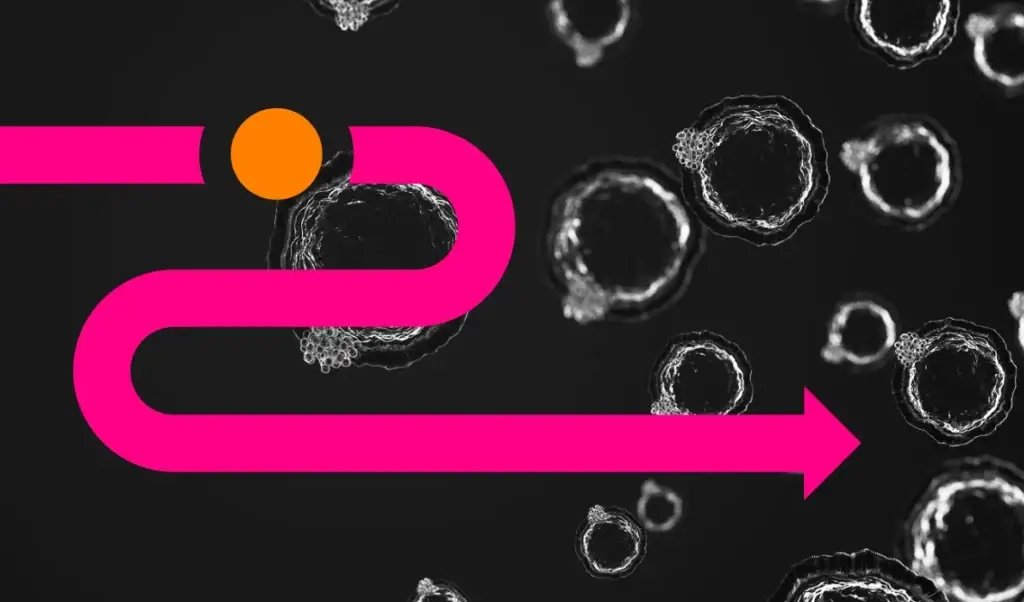As search engines move beyond static lists of links, pharma brands face a new reality: traditional Search Engine Optimization (SEO) is no longer enough. At the heart of this shift are Large Language Models (LLMs) — the AI engines behind tools such as ChatGPT, Bing Copilot, and Google AI Overviews — which scan, synthesize, and prioritize content from across the web to answer user queries.
As a result, success for pharma marketers now depends on integrating Answer Engine Optimization (AEO) — also called Generative Engine Optimization or GEO. AEO ensures your content is structured, clear, and authoritative so that LLMs can accurately interpret and incorporate it into AI-generated summaries.
This blog provides a practical roadmap for applying AEO best practices to strengthen your brand’s visibility and credibility in AI-generated search summaries. You’ll learn how to craft compliant, well-structured content that helps AI systems accurately interpret your messaging — supporting patients and healthcare professionals (HCPs), reinforcing brand trust, and maintaining regulatory precision in a rapidly evolving digital landscape.
Search has stopped being a list of links — it’s become a conversation.
Today, when people ask questions in search engines, AI-generated summaries combine insights from multiple sources into a single, expert-style response. For pharma marketers, this shift is more than technical — it’s existential. Visibility is no longer only about ranking highest in search results; it’s also about being the source AI chooses to cite.
That said, users may not always see your brand explicitly mentioned in AI-generated summaries. Even without a visible citation, shaping the content that informs these answers positions your brand as a trusted authority, influencing patient understanding and HCP conversations before a click. Over time, the consistent application of AEO best practices and structured content increases the likelihood that AI will recognize and attribute your content to your brand.
This evolution — from link-based search to AI-driven answer delivery — has major implications for healthcare. It marks a broader shift from SEO to AEO, in which readability, structure, and authority matter more than traditional ranking tactics. Pages written for pre-COVID algorithms simply won’t cut it in 2025, and healthcare is among the most affected sectors in this new LLM era. For pharma marketers, this shift means less control, as conventional SEO strategies no longer guarantee exposure. And since studies show that many AI-generated answers can be inaccurate or incorrectly cited, it’s now critical to balance legal review with tactics to ensure that LLMs can interpret and use your content correctly.
How can pharma brands implement AEO best practices?
By shaping the AI-generated answers that patients and HCPs rely on, brands can increase their influence and visibility. Implementing AEO best practices ensures your content is structured and authored in ways that make it more likely to be accurately cited in these AI-generated summaries. But there are no easy shortcuts: the most effective digital teams focus on creating pages that feel natural to readers and AI systems. Here are six best-practice strategies for effective AEO in pharma:
- Write for questions, not keywords: AI models hunt for content that directly answers user queries. A post titled “How does [drug] work?” is far more likely to surface than one labeled “Mechanism of Action.” Frame content around the questions real users ask, then answer them clearly and concisely. Use plain-language subheadings to organize information, making it easy for readers and AI systems to find what matters most.
- Keep content scannable: Short paragraphs, bulleted lists, and internal summaries make content easier for readers and AI to parse. Each content block should be a self-contained insight that retains meaning if pulled into an AI summary.
- Prioritize clarity over density: Pharma content often leans toward technical language. However, AI rewards simplicity and clarity. Explain complex science in plain language for patients with varying levels of health literacy. Avoid making it sound like a journal abstract.
- Strengthen trust signals: LLMs — the AI engines behind ChatGPT, Bing Copilot, and Google AI Overviews — prioritize authority signals. Publish content on secure, branded domains, and cite credible, authoritative sources such as the U.S. Food and Drug Administration (FDA), European Medicines Agency (EMA), or peer-reviewed studies. Whenever possible, attribute content to named experts (e.g., “Dr. Jane Smith, chief medical officer”) rather than anonymous teams.
- Use structured data: Implement schema markup (code that tells AI and search engines what your content means) for medical content, FAQs, and product details. This helps AI engines understand the context of your content, reducing the risk of misinterpretation.
- Audit and simulate: Test your content using generative AI models, which create AI-generated summaries from existing content, to see how it is interpreted. If key messages are missing, adjust the structure and clarity. Some pharma teams now incorporate “AI summarization testing” into their Medical, Legal, and Regulatory review process.
Maximize Your Pharma Visibility in the AI Era
Secure your brand's authority and ensure content accuracy in AI-driven search. Learn the critical steps to transform your pharma content from a simple query result to a trusted AI citation.
Navigating compliance in an AI world
Regulatory bodies, such as the FDA, have not yet provided guidance on how AI-generated summaries should treat promotional or branded content. Until they do, pharma companies remain fully accountable for how their materials are interpreted by AI systems. To minimize risk and maintain control over your brand’s messaging, ensure consistency across all platforms:
Align branded claims across websites, social media, and third-party listings to prevent conflicting messages.
Use canonical URLs and timestamps to signal the single, official, and most up-to-date version of your content.
Regularly update disease-state pages to prevent outdated information from being repurposed in AI summaries.
In short, control what you can. By providing clear, consistent, and authoritative content, you guide AI systems to represent your brand accurately, ensuring your messaging is trustworthy wherever it appears.
HDMZ’s Future State Strategy™ for SEO, AEO, and GEO
The AI search era won’t wait for pharma’s comfort zone to catch up. The moment to adapt is now — with content that’s compliant, comprehensible, and compelling enough for human readers and generative engines. By applying AEO best practices, pharma brands can shape AI-generated summaries, influencing patient understanding, guiding healthcare professional conversations, and asserting authority.
HDMZ helps life science brands future-proof their search presence in a generative web, ensuring content is visible across every AI-driven touchpoint. Let’s make your content discoverable — across every AI-driven touchpoint.
FAQs: Navigating AI Search in Pharma Marketing
Understanding the Basics
What are Large Language Models (LLMs)?
LLMs are AI systems that read and learn from large amounts of text to understand questions and generate human-like answers. They power tools such as ChatGPT, Bing Copilot, and Google Gemini, enabling AI to produce readable, conversational responses.
What are AI-generated search summaries, and how do they differ from traditional Search Engine Optimization (SEO) results?
AI-generated search summaries — such as Google AI Overviews and Bing Copilot — are concise, AI-written answers that appear directly in search results, combining information from multiple sources into a single, user-friendly response. Unlike traditional SEO, which delivers ranked pages, these summaries synthesize and cite content from across the web.
How do AI-generated search summaries differ from chat-based AI?
Both use LLMs, but they function differently. Summaries appear directly in search results, while chat-based AI lets users explore topics interactively. These lines are starting to blur as platforms introduce “go deeper” features, creating hybrid experiences that merge summary and conversation.
What is Answer Engine Optimization (AEO)?
AEO is the practice of structuring and presenting content so it’s clear, authoritative, and well-organized. The goal is to make it “AI-ready,” increasing the likelihood that AI systems (LLMs) accurately find, interpret, and incorporate your content into AI-powered summaries.
How does AEO differ from SEO?
SEO aims to improve visibility in search engine result pages (SERPs). AEO focuses on AI inclusion — making content structured, clear, and authoritative so LLMs can select it for AI summaries, creating visibility beyond traditional SEO.
How do LLMs influence AI-generated summaries?
LLMs scan and synthesize content from across the web. Clear, well-structured, authoritative content optimized through AEO is more likely to be incorporated into AI summaries, providing visibility even without clicks.
Will users know that the AI-generated summary came from my brand?
Attribution is not always explicit. AI-generated summaries may synthesize content from multiple sources without showing a visible byline. However, applying AEO best practices ensures your content is influential and authoritative. Over time, consistent, high-quality content builds brand authority and increases the chances of AI correctly recognizing and citing your brand, even when a user doesn’t click through.
Applying AEO in Pharma Marketing
Can pharma companies influence AI summaries?
Yes, indirectly. Applying AEO best practices — structuring, simplifying, and authoring credible, compliant content — improves your chances of being cited accurately.
Which pharma content types perform best?
Content optimized through AEO that answers specific medical questions — disease education pages, drug-mechanism explainers, treatment comparisons, and FAQ hubs — aligns with AI summarization patterns and user intent while reinforcing authority.
How often should content be updated?
Regularly updating disease-state pages, drug information, and FAQs as part of your AEO workflow ensures AI references accurate, current content, mitigating misinterpretation and maintaining credibility.
Can AEO practices improve patient trust and engagement?
Yes. Clear, authoritative, and well-structured content not only improves AI inclusion but also enhances user comprehension and trust with patients and healthcare professionals.
What are the main risks for pharma content in AI-generated summaries?
Misinterpretation and outdated content. AI can combine data from multiple sources and doesn’t always select accurate, complete, or current information. Following AEO best practices and keeping content up to date mitigates these risks.
Measuring Impact
How can teams measure success?
Through AI inclusion metrics — how often pages are cited or summarized in AI-generated search results — along with engagement KPIs such as time-on-page, branded query impressions, and zero-click visibility.
Which tools provide the best insights?
SEO analytic tools such as Semrush, Ahrefs, and SE Ranking now track AI-generated mentions, zero-click visibility, and citation frequency. Combining these with engagement data gives a comprehensive view.
How should teams adjust strategy based on performance?
Analyze which pages are cited, how accurately they’re represented, and what questions aren’t covered. Use these insights to refine content structure, update information, and test new formats to improve AEO outcomes.
Can paid or sponsored content appear in AI-generated summaries?
The landscape is evolving. Google AI Overviews recently launched AI Max campaigns that may show ads alongside summaries. For now, focus on organic visibility by creating structured, authoritative content that supports brand recall.








